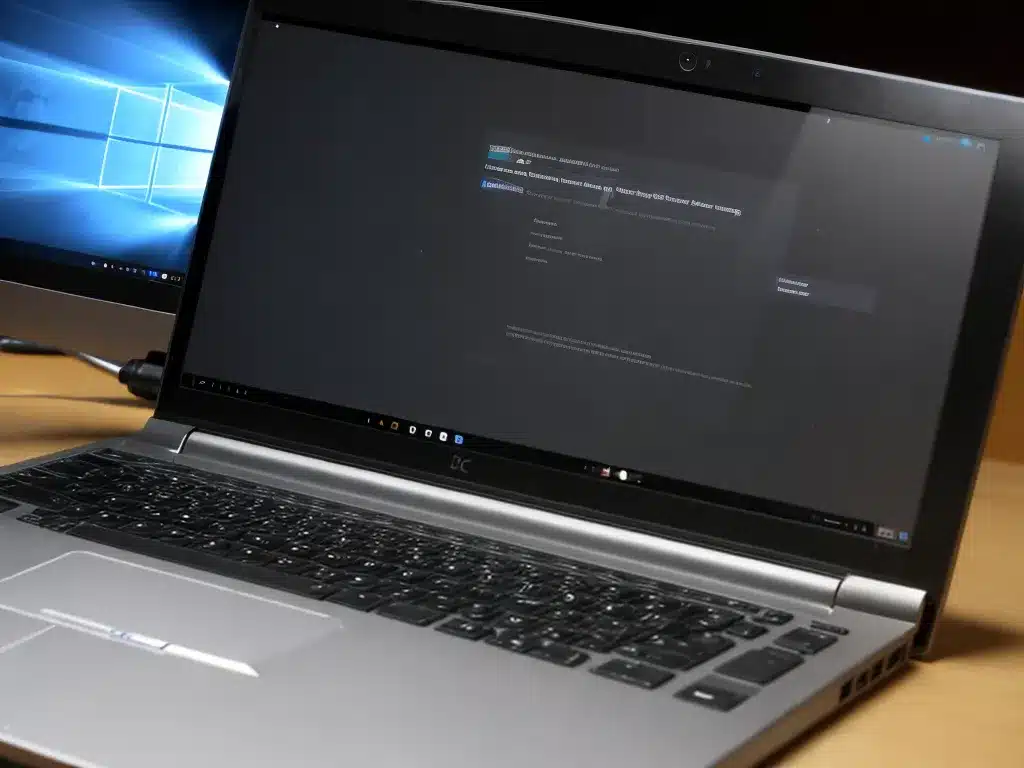
The Windows registry is a database that contains settings and options for the operating system, hardware, software, and user preferences. Over time, changes to software and hardware can leave behind invalid data causing the registry to become corrupted or bloated. A corrupted registry can cause a variety of problems including slow performance, crashes, and error messages. Fortunately, there are steps you can take to resolve issues caused by registry corruption.
Understanding Registry Corruption
The Windows registry stores configuration data in a hierarchical structure. There are 5 main sections of the registry:
- HKEY_CLASSES_ROOT – File associations and COM object settings
- HKEY_CURRENT_USER – Settings for the user account that is currently logged in
- HKEY_LOCAL_MACHINE – Settings for hardware, software, system administration, and security
- HKEY_USERS – Settings for all user accounts on the computer
- HKEY_CURRENT_CONFIG – Settings for the current hardware profile
Problems occur when invalid entries get added to the registry. This can happen through improperly uninstalling programs, malware infections, faulty installs/uninstalls, or manual registry edits. Corrupted entries can contain incorrect or obsolete data that confuses the operating system.
Some common symptoms of a corrupted registry include:
- Frequent error messages or crashes
- Slow performance
- Programs freezing or not responding
- Problems installing or uninstalling programs
- Hardware that suddenly stops working
Preventing Registry Corruption
The best way to deal with a corrupted registry is to prevent it in the first place. Here are some tips:
- Use reputable software – Avoid installing questionable programs that could modify the registry incorrectly. Stick to trusted developers.
- Install/uninstall properly – Always follow the proper installation and uninstallation procedures. Don’t manually delete program folders or files.
- Use registry cleaners carefully – Registry cleaners can remove invalid entries but may also delete important data. Only use trusted cleaners and create restore points first.
- Avoid manual edits – Don’t make manual changes to the registry unless you know exactly what you’re doing. A wrong edit can cause serious issues.
- Clean up old hardware drivers – Remove old hardware drivers for devices you no longer use. This prevents obsolete data from cluttering the registry.
Diagnosing Registry Corruption
If you suspect registry corruption, there are ways to diagnose potential issues:
- Scan with registry cleaners – Reputable registry cleaners like CCleaner can scan for invalid, obsolete, and erroneous entries.
- Check error logs – System logs may contain clues pointing to registry issues. Look in Event Viewer.
- Examine file associations – Improper file associations are a sign of corruption. Check if files open in the wrong programs.
- Look for specific errors -Errors like “DLL not found” or “cannot find registry key” often indicate corruption.
- Test hardware/software – Try using devices or programs that were previously working. Failure indicates a deeper issue like registry corruption.
Back up the registry before making any changes in case things go wrong. Then you can restore from the backup.
Fixing a Corrupted Registry
If you confirm the registry is corrupted, here are some steps to fix it:
1. Scan and Clean with Registry Cleaner
Use a trusted registry cleaner tool like CCleaner to search for invalid entries. Click “Scan for Issues” then “Fix Selected Issues” to clean entries.
Caution: Backup the registry first and review scan results before cleaning.
2. Restore from Last Known Good Configuration
Rollback recent system changes:
- Reboot into Safe Mode
- Open command prompt as admin
- Run
bcdedit /set {default} safeboot minimal - Reboot normally
- Login and rollback changes
This undoes registry changes made since the last restart.
3. Restore from System Restore Point
Revert the registry to an earlier restore point:
- Access System Restore in the Control Panel
- Choose a restore point before corruption occurred
- Click “Scan for affected programs”
- Click “Close” then “Next” to restore the registry
4. Rebuild Corrupted Hives
Use ScanReg to rebuild damaged registry hives.
- Boot to the Windows Recovery Environment
- Open command prompt
- Run
ScanReg /Fixto rebuild corrupted hives - When complete, restart normally
This can fix hive file corruption errors.
Preventing Future Corruption
To avoid repeated registry corruption issues:
- Install monthly Windows Updates
- Only use trusted software
- Clean the registry regularly with CCleaner
- Create periodic system restore points
- Backup the registry using ERUNT
- Rename problematic registry keys instead of deleting
- Limit start-up programs cluttering the registry
Catching registry corruption early and utilizing restore points and backups makes recovery much easier. Handle the registry with care and you can avoid major issues down the road.












